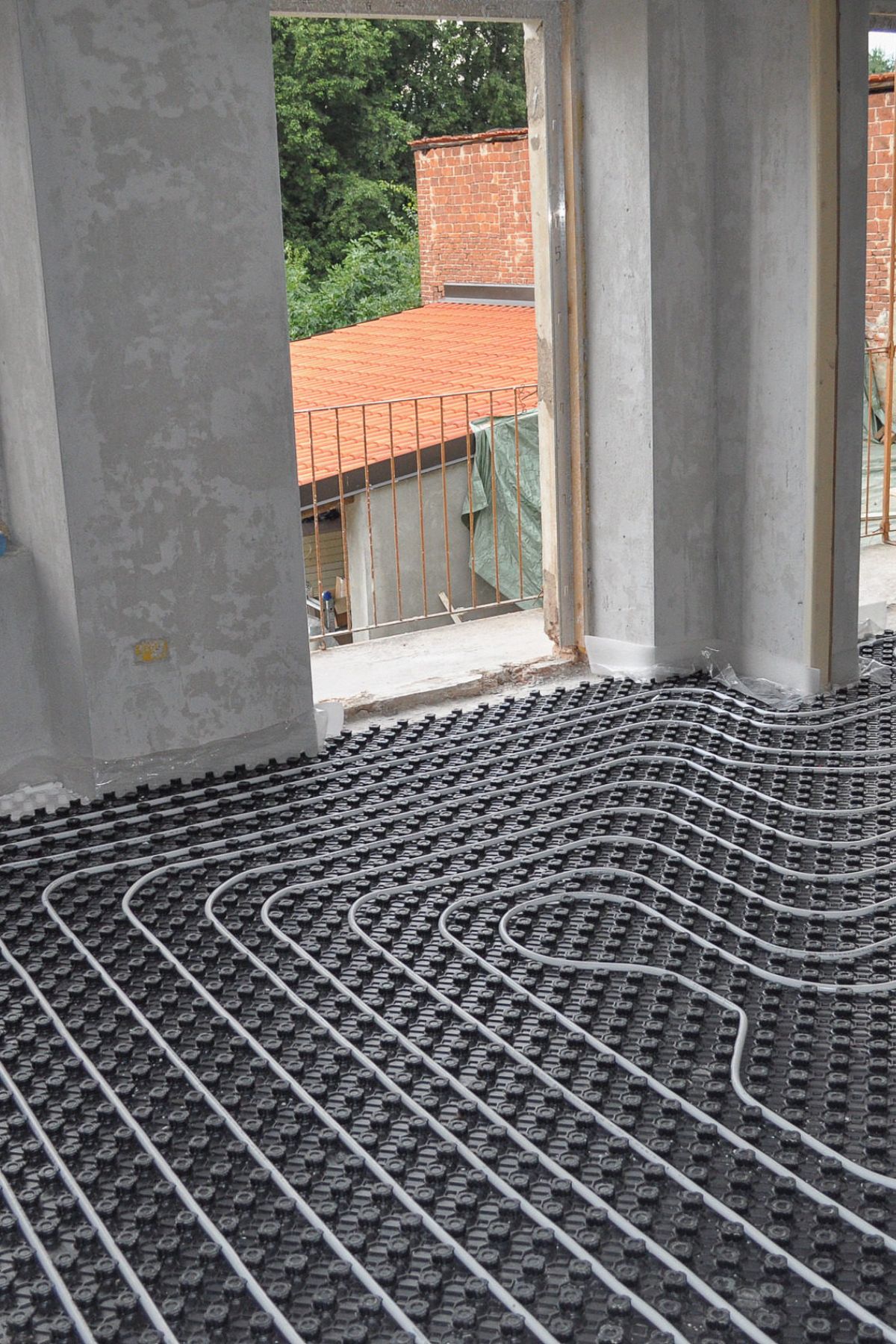
The cosmetic changes we make to a home are arguably the ones that get us the most excited, but the heating system you use is one that you need to decide one early on in a renovation, and it’s a really important one to make!
Do you stick with traditional radiators or opt for underfloor heating? These are the two most popular heating options and there is benefits and drawbacks to both.
It can be daunting if you’re having to make decisions quickly in your renovation, and after completing two renovations under my belt, I thought I would share everything I have learnt so far.
Underfloor Heating vs. Traditional Radiators: Which is Best for Your Home’s Look and Feel?
The Aesthetic Appeal
Underfloor Heating: The Invisible Solution
Certain styles of radiators are not blessed with their looks, and this problem just doesn’t exist with underfloor heating. It is a completely invisible type of heating and you are not restricted by places and small spaces you have available to get a radiator to fit.
Radiators can often affect the visual flow of a room, and with underfloor heating you end up having more prime real estate in your interior to play around with.
Underfloor heating is a seamless, minimalist choice of heating which does give you far greater control over your interior furnishings and how you lay out your room.

Traditional Radiators: Classic and Customisable
Radiators have been the long standing heating solution in UK homes, and whilst they certainly can cause issues when planning the layout and heating in your home, there are so many different styles available now that they can become a design accent in their own right.
Traditional white panel radiators can be ugly and unsightly, but this is only one type. Anthracite and cast iron radiators are becoming hugely popular, they add so more than just heating to a space.
Radiators can also limit furniture placement and you may have limited options if it’s a small room, a good workaround for this is opting for vertical radiators, they’re generally much slimmer and can squeeze into places without taking up so much wall space.
Heat Distribution and Comfort
Underfloor Heating: Even Warmth from the Ground Up
The biggest difference with this type of heating is that you get consistent and even heat distribution throughout a room thanks to the way that is is fitted underneath your flooring.
Radiators can create hot and cold spots and in very large rooms, the distribution of heat just can’t be matched. Many people often choose to place radiators underneath windows and covered by curtains so you suppress the heat even more!
Whilst your room may feel warm after getting out of a shower with a heated towel rail, nothing prepares you for the feel of those cold tiles! This makes underfloor heating a really attractive and functional choice for cold homes in the winter.
Traditional Radiators: Quick and Powerful Heating
Radiators certainly offer quick and powerful heating once they kick in, they work by heating the air around them which then gradually circulates around the room. Typically they warm up fairly quickly so you can start to feel some light relief on those colder days much faster.
As I mentioned above, radiator heat can be unevenly distributed, leading to colder areas further from the radiator. To counteract this, you can use multiple radiators in a room. Although when planning how many radiators you need for a rooms layout, you should always be doing a BTU calculation in advance of this so you know exactly what heat output each room size needs.

Energy Efficiency and Running Costs
Underfloor Heating: Lower Running Costs in the Long Run
Underfloor heating, particularly water-based systems, can be more energy-efficient than radiators because they operate at lower temperatures while still providing the same level of warmth. This means they require less energy to maintain a comfortable temperature, leading to lower heating bills over time.
Electric underfloor heating, however, can be more expensive to run compared to a gas-powered radiator system, making it a better choice for smaller areas such as bathrooms rather than whole-house heating.
Traditional Radiators: More Cost-Effective to Install
Radiators are generally cheaper and easier to install, especially in existing homes. Upgrading an old radiator system is usually more affordable than retrofitting underfloor heating, which may require lifting floors and significant modifications.
However, radiators often need to operate at higher temperatures to achieve the same level of warmth as underfloor heating, which can result in higher energy bills, particularly in homes with poor insulation.
Installation Considerations
Underfloor Heating: Best for New Builds and Renovations
This type of heating is generally best suited to two types of situations, new build developments and renovations which are in the early stages. Underfloor heating generally requires your flooring to be pulled up, so it’s not really a practical choice if you’re living in the house.
Water-based underfloor heating systems require more work to install but are more energy-efficient in the long term, while electric systems are easier to fit but can be costly to run.

Traditional Radiators: Simpler and More Versatile
Radiators are still the easiest to install, replace, upgrade and can be the cheapest options for heating upgrades (especially if you choose traditional white panel rads).
They tend to be compatible with most existing heating systems and there is so much choice now that you don’t have to be pigeon holed into a bog standard white radiator.
Which One is Right for Your Home?
Ultimately the only person that can make the right decision for your home and lifestyle is you! Your budget, home design and heating needs should lead your decision.
If you’re beginning a home reno and want something that is sleek and modern from the get go, choose underfloor heating! However, if you’re just planning a few upgrades or actually love the design accent designer radiators add to an interior (I do!), then opt for traditional radiators, but do have a look around at all the styles that are available.
Paul, a professional plumber in Beverley, shares his insight:
“Underfloor heating is fantastic for modern homes, especially in open-plan spaces where you want to keep things looking neat and uncluttered. That said, radiators still have their place—especially in older homes where underfloor heating might not be practical. It really comes down to what works best for your home and lifestyle.”
If you have any further questions about choosing heating or would like some advice, please leave me a comment below!
